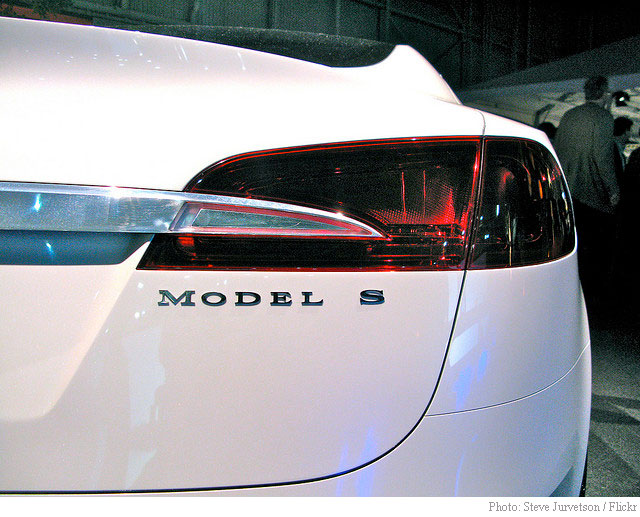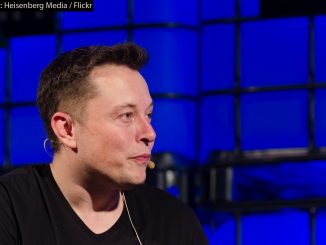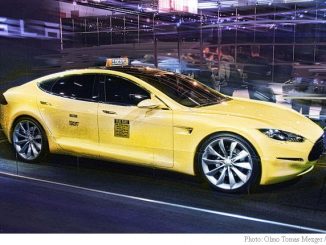It’s a well known fact that Elon Musk is against hydrogen fuel-cell technology. In fact, in numerous occasions the head of Tesla (NASDAQ:TSLA) has called the concept of hydrogen-powered cars a silly move, claiming that as a form of gas, hydrogen it’s not a source of energy but rather an energy storage mechanism. Musk believes that when it comes to battery electric vehicle space, the tech is simply inefficient and nothing more than a marketing ploy for automakers.
“Fuel cells should be renamed ‘fool cells,’ they are so stupid,” Musk once said. So imagine what his reaction must have been after the announcement of Stefan Holthausen, the founder of Dutch gas supplier Holthausen Group, that a Tesla car had been converted to a hydrogen fuel cell powertrain.
“We managed to hack a second-hand Tesla so that it can drive on hydrogen. With this we can more than double the action range,” said Holthausen, adding “[t]he hydrogen-powered Tesla Model S was dubbed the “Hesla.”
Holthausen’s Hesla success makes his company the first in the world to do so. The way they approached their conversion project was by initially having the Group’s engineers neither touch nor replace Model S’ built-in battery. What they did next was add a second layer of charging connected to a hydrogen power source. Inside the fuel cell, electrons stripped from hydrogen gas were then passed through a circuit into the original battery to give the additional charge. Once the polarized hydrogen atoms react with oxygen to make water, they exit the fuel cell.
Inserting a hydrogen tank and fuel cell into the car’s system though was not an easy feat. Engineer Max Holthausen called Tesla’s model S engineering system “a big maze.” But despite the challenges in the end, they managed to successfully complete their Hesla Project, claiming that the modification had boosted the mileage of the electric vehicle (EV) to 1,000 km (620 miles) on a full battery charge and hydrogen supply. This is almost double the best range seen in the Tesla Model S line—the 100D version officially runs only up to 539 km (335 miles) on a single charge.
Like Tesla’s cars, vehicles equipped with hydrogen fuel cells also run on electricity. The main difference is that the former store electricity in a battery while the latter generate their electricity with hydrogen and oxygen. It should be noted that the one advantage fuel cell vehicles have over EVs is that their refueling takes only a few minutes while charging electric cars takes longer. Ideally, if one could take only the best features these systems offer and efficiently combine them into one model, then we’d obviously be able to create a much better car range-wise.
That said, US Tesla S owners before considering a hydrogen fuel cell conversion should know that Holthausen’s package costs $58,000. At the same time, a brand new Tesla S costs around $80,000. Holthausen claims however, that there’s already interest in the product, saying the company has “already received a lot of requests from home and abroad.”
Another aspect to consider is that there are very few hydrogen refueling stations—only 39 in the US, with 25 of them concentrated on the West Coast. When one compares that number with 16,000 public charging stations for electric cars, running on rechargeable batteries alone is still a much more convenient and far cheaper option.
There are two schools of thought about this new development. Critics say inserting a hydrogen tank defeats an electric car’s purpose of not relying on an external power source. Still, advocates welcome this idea as a mileage extender given the new approach will be less worrisome for electric car owners in terms of thinking when the nearest sign of a charging station will appear.
Despite the setbacks from high conversion costs and scarcity of stations, Holthausen, who is also involved with hydrogen stations, sees a niche for hydrogen alongside pure battery-powered systems. He intends to improve his prototype and collect further data as the need for nonpetroleum power sources keeps on growing.
Should things advance adaptability and efficiency-wise, the conversion could create an additional market for hydrogen-refueling infrastructure and hydrogen fuel cells, something Toyota and several other automakers, including GM and Honda, would love to see happening as they push for the commercialization of fuel-cells as a zero emission technology. Additionally, according to a Global Market for Hydrogen Fuel Cell Vehicles report, fuel cells could sell more than 20 million vehicles by year 2032, generating up to $1.2 trillion in revenue for the auto industry.
- Bulenox: Get 45% to 91% OFF ... Use Discount Code: UNO
- Risk Our Money Not Yours | Get 50% to 90% OFF ... Use Discount Code: MMBVBKSM
Disclaimer: This page contains affiliate links. If you choose to make a purchase after clicking a link, we may receive a commission at no additional cost to you. Thank you for your support!





With solar panels on my roof my energy is basically free…when I can generate hydrogen at home from the sun maybe I’ll consider “fool cells”.
Or you could just get the trailer/tow package. Then put a gas/diesel generator on it, and tow that behind the car. Plug the car into the generator! Same concept.
The problem with fuel cell tech is that you are still burning something, i.e. hydrogen. And while the result is water, if that is vented to the environment, we also have a global warming problem, as water vapor is also a heat trapping molecule. The best system would actually be running vehicles on electricity that is 100% renewable.